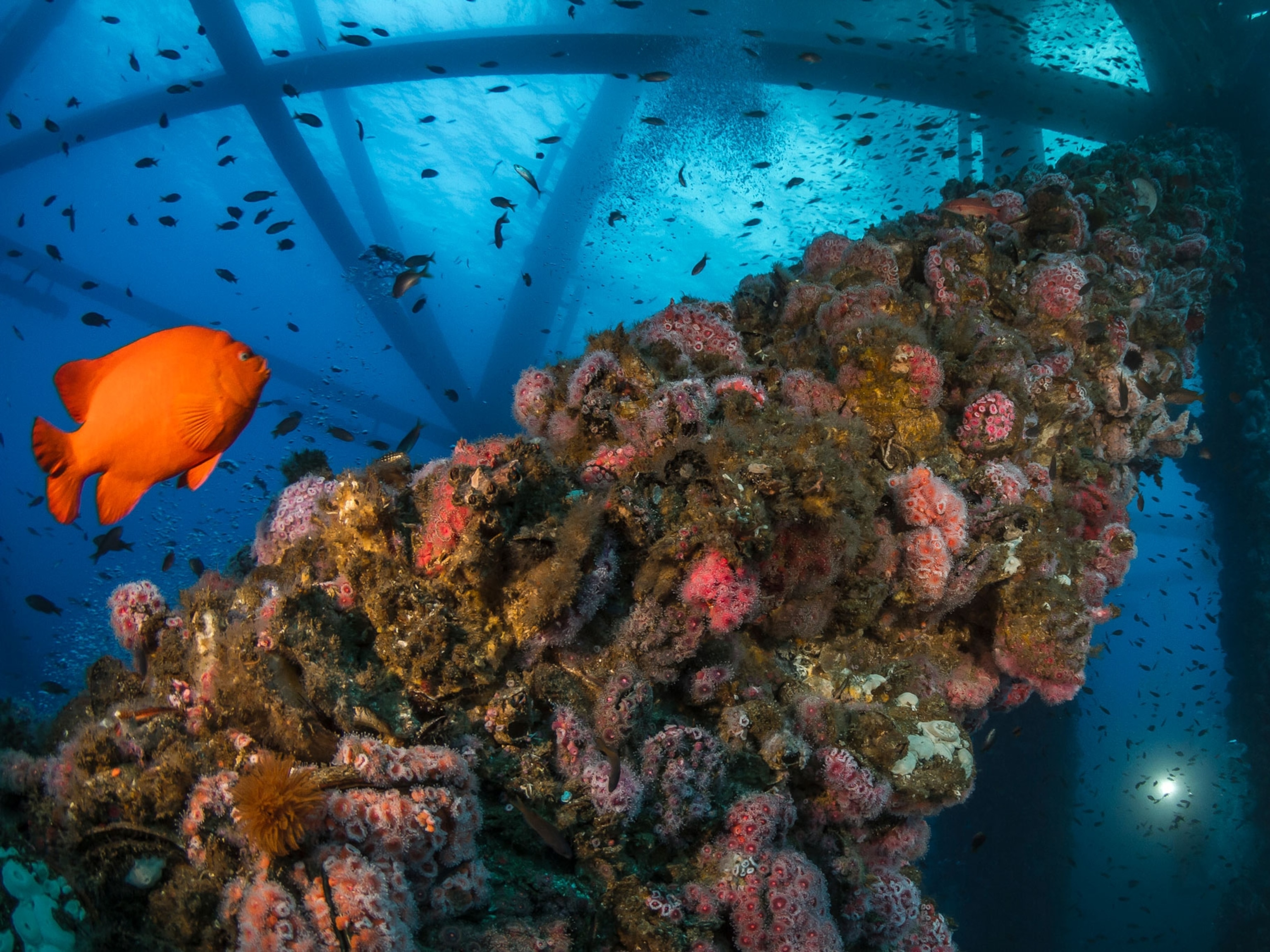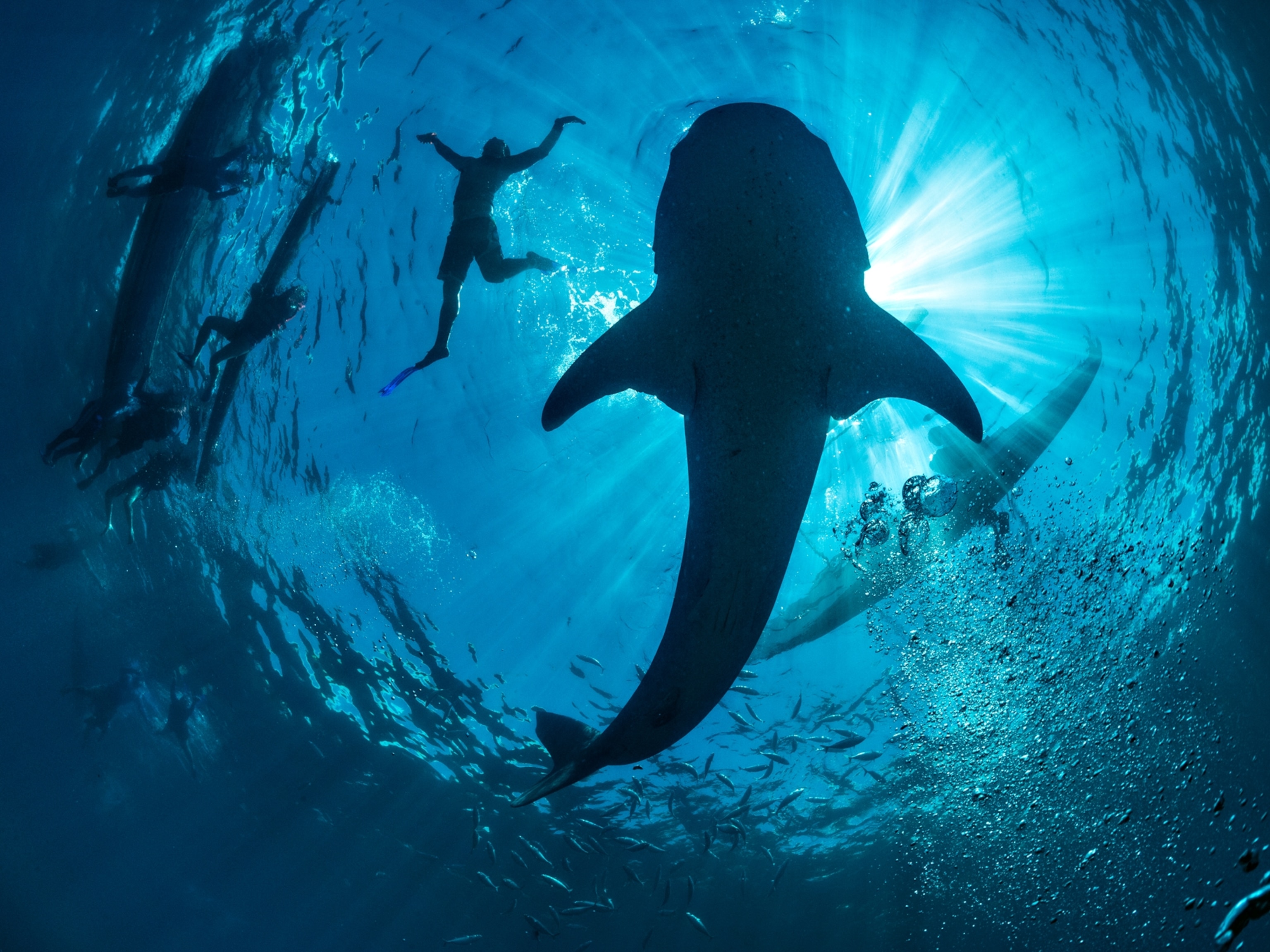
Fish Can Recognize Faces, a Surprisingly Human Skill
A coral reef fish can discriminate between individual fish by their unique facial patterns—just like we do.
A school of fish might seem like a sea of identical faces, but at least one species has no problem telling its comrades—and even strangers—apart, new research says.
To human eyes, which cannot see ultraviolet light, the Ambon damselfish (Pomacentrus amboinensis), appears yellow with a few spots.
But to damselfish, which can see ultraviolet wavelengths, their fellow species sport a complex array of facial patterns that are unique to each individual.
"The idea is that these patterns help the fish communicate secretly—without attracting the attention of predators, which, like us, are UV blind," says experiment leader Ulrike Siebeck of the University of Queensland, Australia. (See photo gallery: "Masters of Undersea Camouflage.")
Scientists could see these patterns when they viewed the fish, native to coral reefs in the Western Pacific Ocean, through a camera with a filter that blocks all wavelengths of light except ultraviolet.
In experiments, Siebeck and colleagues found the 3.5-inch (9-centimeter) long damselfish can discriminate between individual faces of their own species and those of a similar species, the lemon damselfish. They could also tell the difference between different individuals of their own species.
"I was amazed at how well these fish could discriminate facial patterns that were almost identical to my eyes," says Siebeck, who presented her preliminary results at the recent Behaviour 2015 conference held in Cairns, Australia.
Face-Off
For the experiments, Siebeck and her colleagues trained captive damselfish to associate a particular facial pattern, say, a stripe on the forehead, with a food reward.
"The fish quickly learn to select rewarded targets placed in or behind their aquarium by swimming up to them," says Siebeck. "Initially we used printed and laminated pictures, but recently we moved on to presenting [the facial patterns] on a computer monitor located behind the aquarium." (Also see "Wasps Can Recognize Faces.")
The team then tested the fish's recognition ability by presenting them with two patterns: one familiar face for which they were rewarded, and one new face.
It turns out the fish could discriminate almost any pair of fish faces the team showed them, whether the faces belonged to their own species of the similar-looking lemon damselfish.
To create more of a recognition challenge, the team morphed, or blended, two or more photographs of fish faces to create a series of unique images the fish hadn't seen before, and repeated the same experiments. Again, the fish could identify the faces and passed the tests with flying colors.

Since ambon damselfish are social animals that live in groups, facial recognition may help the animals discriminate between individuals and thus develop and maintain bonds.
The researchers suspect that a fish's facial pattern may also contain information about its health or social status, but haven't yet tested this idea.
Of Fish and Humans
Jochen Zeil, a biologist at Australian National University in Canberra, says the experiments are "a wonderful example" of how animals can recognize—and use—patterns.
"We know too little about the importance of color and brightness patterns in individual recognition in animals," says Zeil, who wasn't involved in the research. (See "It's Thanks to Evolution That No Two Faces Are Alike, Study Finds.")
"Two aspects of this experiment were surprising: The fact that these patterns are only in salient in UV, and the fine pattern detail these fish attend to."
Experiment leader Siebeck also did not expect to discover how face discrimination in fish is so similar to how people recognize faces—even though fish lack the parts of the brain in humans that are associated with that skill.
For instance, in the morphed facial pattern experiment, her team found evidence for categorical perception in their fishy subjects.
This means the fish could perceive differences in similar-looking photographs in the same way that humans do.
"Categorical perception is thought to allow animals to make quick decisions about an image or stimulus," says Siebeck. (Can you always remember faces? You may be a super-recognizer.)
"In nature, this could be the vital decision about whether an approaching animal is classed as a predator or a harmless animal."
It's unknown how damselfish can use categorical perception without the part of the brain that's known to process it.
Related Topics
You May Also Like
Go Further
Animals
- Orangutan seen using plants to heal wound for first timeOrangutan seen using plants to heal wound for first time
- What La Palma's 'lava tubes' tell us about life on other planetsWhat La Palma's 'lava tubes' tell us about life on other planets
- This fungus turns cicadas into zombies who procreate—then dieThis fungus turns cicadas into zombies who procreate—then die
- How can we protect grizzlies from their biggest threat—trains?How can we protect grizzlies from their biggest threat—trains?
- This ‘saber-toothed’ salmon wasn’t quite what we thoughtThis ‘saber-toothed’ salmon wasn’t quite what we thought
Environment
- What La Palma's 'lava tubes' tell us about life on other planetsWhat La Palma's 'lava tubes' tell us about life on other planets
- How fungi form ‘fairy rings’ and inspire superstitionsHow fungi form ‘fairy rings’ and inspire superstitions
- Your favorite foods may not taste the same in the future. Here's why.Your favorite foods may not taste the same in the future. Here's why.
- Are the Great Lakes the key to solving America’s emissions conundrum?Are the Great Lakes the key to solving America’s emissions conundrum?
- The world’s historic sites face climate change. Can Petra lead the way?The world’s historic sites face climate change. Can Petra lead the way?
History & Culture
- Meet the ruthless king who unified the Kingdom of Hawai'iMeet the ruthless king who unified the Kingdom of Hawai'i
- Hawaii's Lei Day is about so much more than flowersHawaii's Lei Day is about so much more than flowers
- When treasure hunters find artifacts, who gets to keep them?When treasure hunters find artifacts, who gets to keep them?
Science
- Why ovaries are so crucial to women’s health and longevityWhy ovaries are so crucial to women’s health and longevity
- Orangutan seen using plants to heal wound for first timeOrangutan seen using plants to heal wound for first time
- Should you be concerned about bird flu in your milk?Should you be concerned about bird flu in your milk?
Travel
- 5 of Uganda’s most magnificent national parks
- Paid Content
5 of Uganda’s most magnificent national parks - On this Croatian peninsula, traditions are securing locals' futuresOn this Croatian peninsula, traditions are securing locals' futures
- Are Italy's 'problem bears' a danger to travellers?Are Italy's 'problem bears' a danger to travellers?




